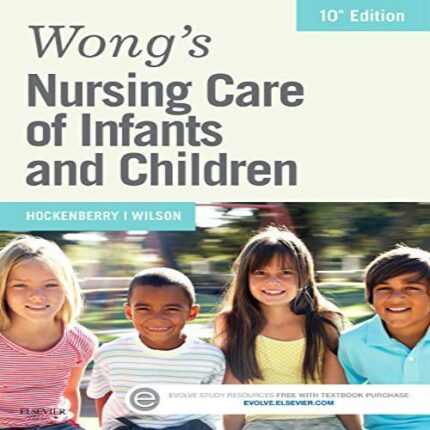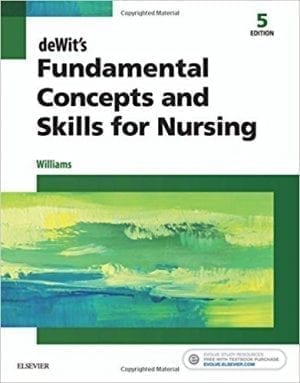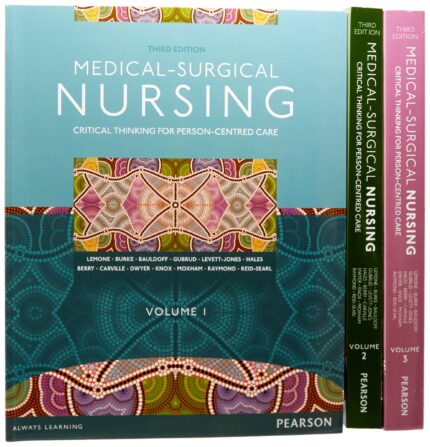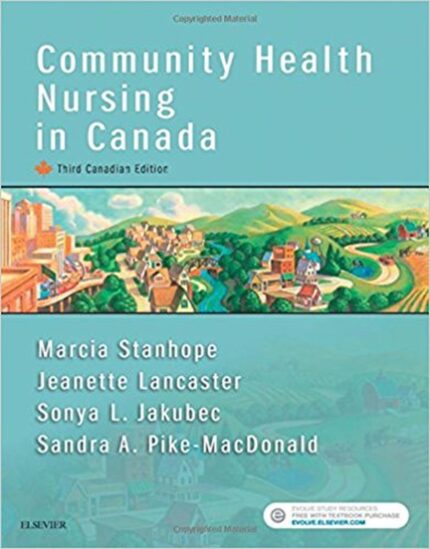Test Bank for Claytons Basic Pharmacology for Nurses 18th Edition by Willihnganz
Chapter 01: Drug Definitions, Standards, and Information Sources
MULTIPLE CHOICE
1.What is the name under which a drug is listed by the US Food and Drug Administration (FDA)?
| a. | Brand |
| b. | Nonproprietary |
| c. | Official |
| d. | Trademark |
ANS: C
The official name is the name under which a drug is listed by the FDA. The brand name, or trademark, is the name given to a drug by its manufacturer. The nonproprietary, or generic, name is provided by the United States Adopted Names Council
DIF: Cognitive Level: Knowledge REF: p. 2 OBJ: 1
NAT: NCLEX Client Needs Category: Safe, Effective Care Environment
TOP: Nursing Process Step: Assessment CON: Patient Education
- Which source contains information specific to nutritional supplements?
| a. | USP Dictionary of USAN & International Drug Names |
| b. | Natural Medicines Comprehensive Database |
| c. | United States Pharmacopoeia/National Formulary (USP NF) |
| d. | Drug Interaction Facts |
ANS: C
United States Pharmacopoeia/National Formulary contains information specific to nutritional supplements. USP Dictionary of USAN & International Drug Names is a compilation of drug names, pronunciation guide, and possible future FDA approved drugs; it does not include nutritional supplements. Natural Medicines Comprehensive Database contains evidence-based information on herbal medicines and herbal combination products; it does not include information specific to nutritional supplements. Drug Interaction Facts contains comprehensive information on drug interaction facts; it does not include nutritional supplements.
DIF: Cognitive Level: Knowledge REF: p. 2 | p. 3 OBJ: 3
NAT: NCLEX Client Needs Category: Physiological Integrity
TOP: Nursing Process Step: Assessment CON: Nutrition | Patient Education
3.What is the most comprehensive reference available to research a drug interaction?
| a. | Drug Facts and Comparisons |
| b. | Drug Interaction Facts |
| c. | Handbook on Injectable Drugs |
| d. | Martindale—The Complete Drug Reference |
ANS: B
First published in 1983, Drug Interaction Facts is the most comprehensive book available on drug interactions. In addition to monographs listing various aspects of drug interactions, this information is reviewed and updated by an internationally renowned group of physicians and pharmacists with clinical and scientific expertise.
DIF: Cognitive Level: Comprehension REF: p. 4 OBJ: 3
NAT: NCLEX Client Needs Category: Physiological Integrity
TOP: Nursing Process Step: Assessment CON: Safety | Patient Education | Clinical Judgment
4.The physician has written an order for a drug with which the nurse is unfamiliar. Which section of the Physicians’ Desk Reference (PDR) is most helpful to get information about this drug?
| a. | Manufacturer’s section |
| b. | Brand and Generic name section |
| c. | Product category section |
| d. | Product information section |
ANS: B
A physician’s order would include the brand and/or generic name of the drug. The alphabetic index in the PDR would make this section the most user-friendly. Based on a physician’s order, manufacturer’s information and classification information would not be known. The Manufacturer’s section is a roster of manufacturers. The product category section lists products subdivided by therapeutic classes, such as analgesics, laxatives, oxytocics, and antibiotics. The product information section contains reprints of the package inserts for the major products of manufacturers.
DIF: Cognitive Level: Comprehension REF: p. 4 OBJ: 3
NAT: NCLEX Client Needs Category: Physiological Integrity
TOP: Nursing Process Step: Planning CON: Safety | Patient Education | Clinical Judgment
5.Which online drug reference makes available to healthcare providers and the public a standard, comprehensive, up-to-date look up and downloadable resource about medicines?
| a. | American Drug Index |
| b. | American Hospital Formulary |
| c. | DailyMed |
| d. | Physicians’ Desk Reference (PDR) |
ANS: C
DailyMed makes available to healthcare providers and the public a standard, comprehensive, up-to-date look up and downloadable resource about medicines. The American Drug Index is not appropriate for patient use. The American Hospital Formulary is not appropriate for patient use. The PDR is not appropriate for patient use.
DIF: Cognitive Level: Knowledge REF: p. 3 | p. 5 OBJ: 4
NAT: NCLEX Client Needs Category: Physiological Integrity
TOP: Nursing Process Step: Implementation
CON: Safety | Patient Education | Clinical Judgment
6.Which legislation authorizes the FDA to determine the safety of a drug before its marketing?
| a. | Federal Food, Drug, and Cosmetic Act (1938) |
| b. | Durham Humphrey Amendment (1952) |
| c. | Controlled Substances Act (1970) |
| d. | Kefauver Harris Drug Amendment (1962) |
ANS: A
The Federal Food, Drug, and Cosmetic Act of 1938 authorized the FDA to determine the safety of all drugs before marketing. Later amendments and acts helped tighten FDA control and ensure drug safety. The Durham Humphrey Amendment defines the kinds of drugs that cannot be used safely without medical supervision and restricts their sale to prescription by a licensed practitioner. The Controlled Substances Act addresses only controlled substances and their categorization. The Kefauver Harris Drug Amendment ensures drug efficacy and greater drug safety. Drug manufacturers are required to prove to the FDA the effectiveness of their products before marketing them.
DIF: Cognitive Level: Knowledge REF: p. 5 OBJ: 6
NAT: NCLEX Client Needs Category: Physiological Integrity
TOP: Nursing Process Step: Assessment
CON: Safety | Patient Education | Evidence | Health Care Law
7.Meperidine (Demerol) is a narcotic with a high potential for physical and psychological dependency. Under which classification does this drug fall?
| a. | I |
| b. | II |
| c. | III |
| d. | IV |
ANS: B
Meperidine (Demerol) is a Schedule II drug; it has a high potential for abuse and may lead to severe psychological and physical dependence. Schedule I drugs have high potential for abuse and no recognized medical use. Schedule III drugs have some potential for abuse. Use may lead to low to moderate physical dependence or high psychological dependence. Schedule IV drugs have low potential for abuse. Use may lead to limited physical or psychological dependence.
DIF: Cognitive Level: Comprehension REF: p. 5 OBJ: 2
NAT: NCLEX Client Needs Category: Safe, Effective Care Environment
TOP: Nursing Process Step: Assessment CON: Patient Education | Addiction | Pain
8:What would the FDA do to expedite drug development and approval for an outbreak of smallpox, for which there is no known treatment?
| a. | List smallpox as a health orphan disease. |
| b. | Omit the preclinical research phase. |
| c. | Extend the clinical research phase. |
| d. | Fast track the investigational drug. |
ANS: D













